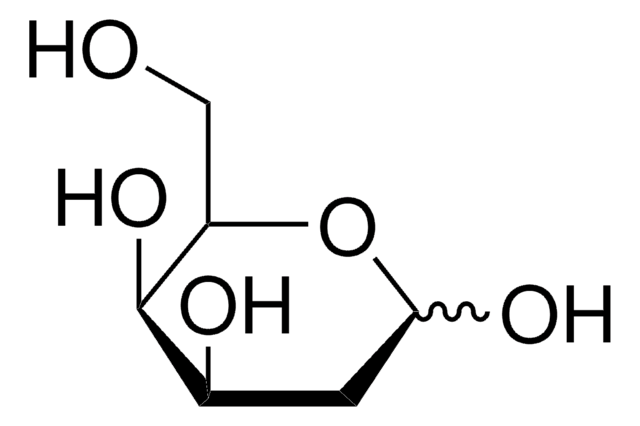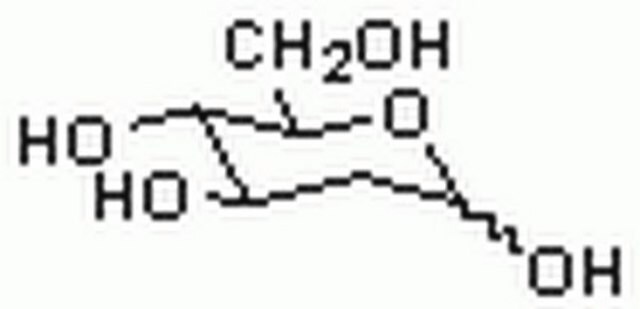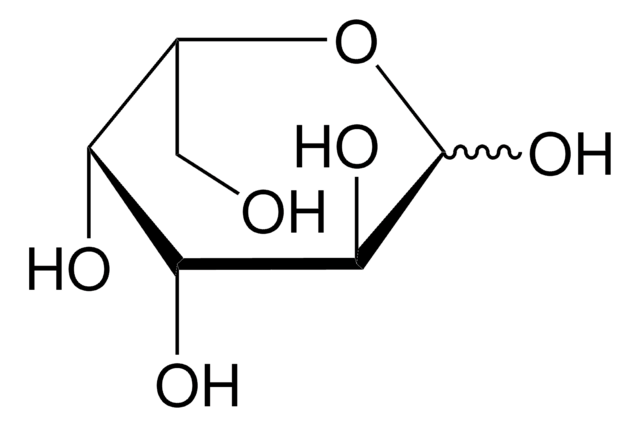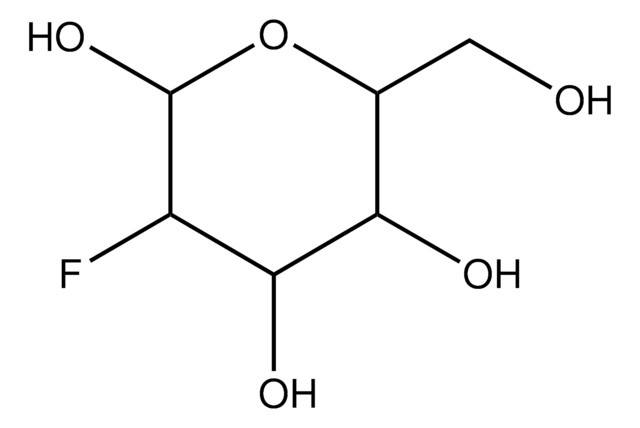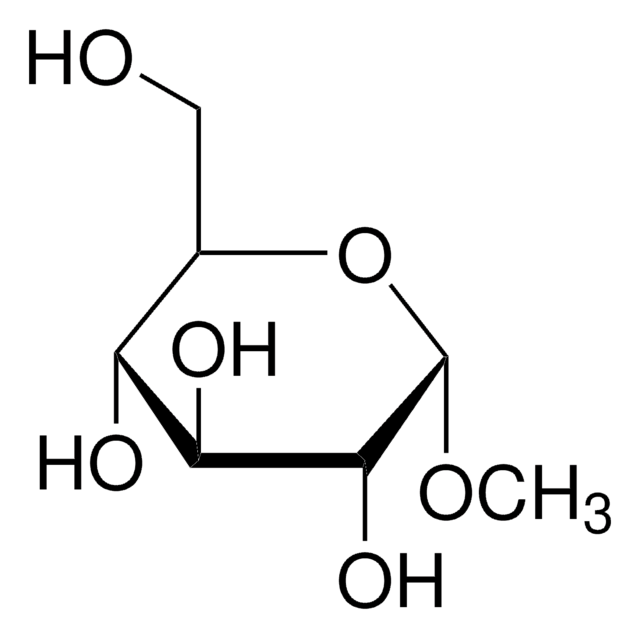Alle Fotos(3)
Wichtige Dokumente
D9761
6-Desoxy-D-Glukose
Synonym(e):
Chinovose, Epifucose
Anmeldenzur Ansicht organisationsspezifischer und vertraglich vereinbarter Preise
Alle Fotos(3)
About This Item
Empirische Formel (Hill-System):
C6H12O5
CAS-Nummer:
Molekulargewicht:
164.16
Beilstein:
1723317
EG-Nummer:
MDL-Nummer:
UNSPSC-Code:
12352200
PubChem Substanz-ID:
NACRES:
NA.52
Empfohlene Produkte
Qualität
Molecular Biology
for molecular biology
Qualitätsniveau
Assay
≥98% (TLC)
Form
powder
Lagertemp.
−20°C
SMILES String
C[C@H]1OC(O)[C@H](O)[C@@H](O)[C@@H]1O
InChI
1S/C6H12O5/c1-2-3(7)4(8)5(9)6(10)11-2/h2-10H,1H3/t2-,3-,4+,5-,6?/m1/s1
InChIKey
SHZGCJCMOBCMKK-GASJEMHNSA-N
Suchen Sie nach ähnlichen Produkten? Aufrufen Leitfaden zum Produktvergleich
Allgemeine Beschreibung
6-Deoxy-D-glucose is a structural homolog of D-glucose (dextrose) and stable analog. It lacks the hydroxyl group at carbon 6 position. It is also an analog of mannose.
Anwendung
6-Deoxy-D-glucose has been used as a standard in the circular dichroism measurements. It has also been used as sugar to incubate starved Dictyostelium HMX44A.atg1-1 cells for microscopy studies.
Biochem./physiol. Wirkung
2-Deoxy-D-glucose (2-DG) is used as a glycolytic inhibitor in studying the biological function of glucose. It is not metabolized, induces endoplasmic reticulum stress and hence, blocks the carbohydrate metabolism in cancer cells. It has therapeutic potential in targeting chemo-resistant hypoxic cancer cells. 2-DG halts the N-linked glycosylation by replacing mannose.
Lagerklassenschlüssel
11 - Combustible Solids
WGK
WGK 3
Flammpunkt (°F)
Not applicable
Flammpunkt (°C)
Not applicable
Persönliche Schutzausrüstung
Eyeshields, Gloves, type N95 (US)
Hier finden Sie alle aktuellen Versionen:
Besitzen Sie dieses Produkt bereits?
In der Dokumentenbibliothek finden Sie die Dokumentation zu den Produkten, die Sie kürzlich erworben haben.
Kunden haben sich ebenfalls angesehen
D Granot et al.
Proceedings of the National Academy of Sciences of the United States of America, 88(13), 5724-5728 (1991-07-01)
Nutrients play a critical role in the decision to initiate a new cell cycle. Addition of nutrients to arrested cells such as stationary-phase cells and spores induces them to begin growth. We have analyzed the nutrients required to induce early
A H Romano
Journal of bacteriology, 152(3), 1295-1297 (1982-12-01)
6-Deoxy-D-glucose, a structural homomorph of D-glucose which lacks a hydroxyl group at carbon 6 and thus cannot be phosphorylated, is transported by Saccharomyces cerevisiae via a facilitated diffusion system with affinity equivalent to that shown with D-glucose. This finding supports
C Laporte et al.
Cell death and differentiation, 14(2), 266-274 (2006-07-01)
While necrotic cell death is attracting considerable interest, its molecular bases are still poorly understood. Investigations in simple biological models, taken for instance outside the animal kingdom, may benefit from less interference from other cell death mechanisms and from better
Cristina De Castro et al.
Glycobiology, 23(3), 346-353 (2012-10-19)
A major virulence factor for Yersinia pseudotuberculosis is lipopolysaccharide, including O-polysaccharide (OPS). Currently, the OPS based serotyping scheme for Y. pseudotuberculosis includes 21 known O-serotypes, with genetic and structural data available for 17 of them. The completion of the OPS
A J Fry et al.
Molecular and biochemical parasitology, 60(1), 9-18 (1993-07-01)
Kinetic parameters for entry of D-fructose into Trypanosoma brucei brucei have been determined. The net uptake of D-fructose was found to be rapid and occurred at a rate which was comparable with that observed for uptake of D-glucose. The Km
Unser Team von Wissenschaftlern verfügt über Erfahrung in allen Forschungsbereichen einschließlich Life Science, Materialwissenschaften, chemischer Synthese, Chromatographie, Analytik und vielen mehr..
Setzen Sie sich mit dem technischen Dienst in Verbindung.


